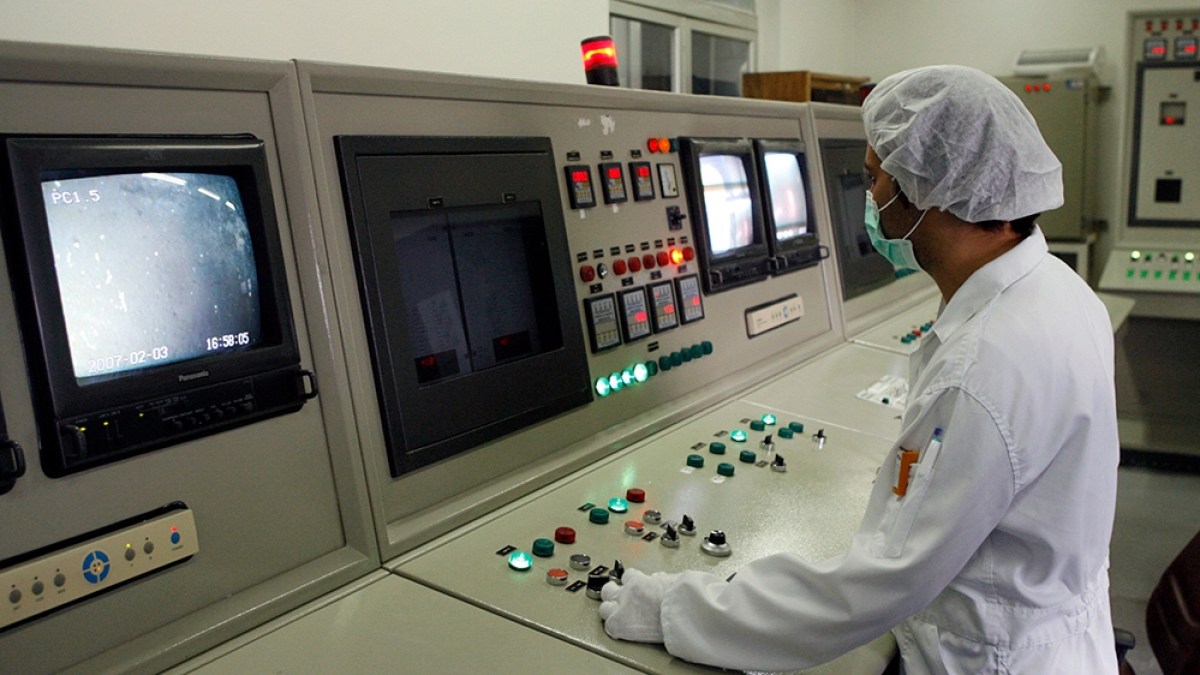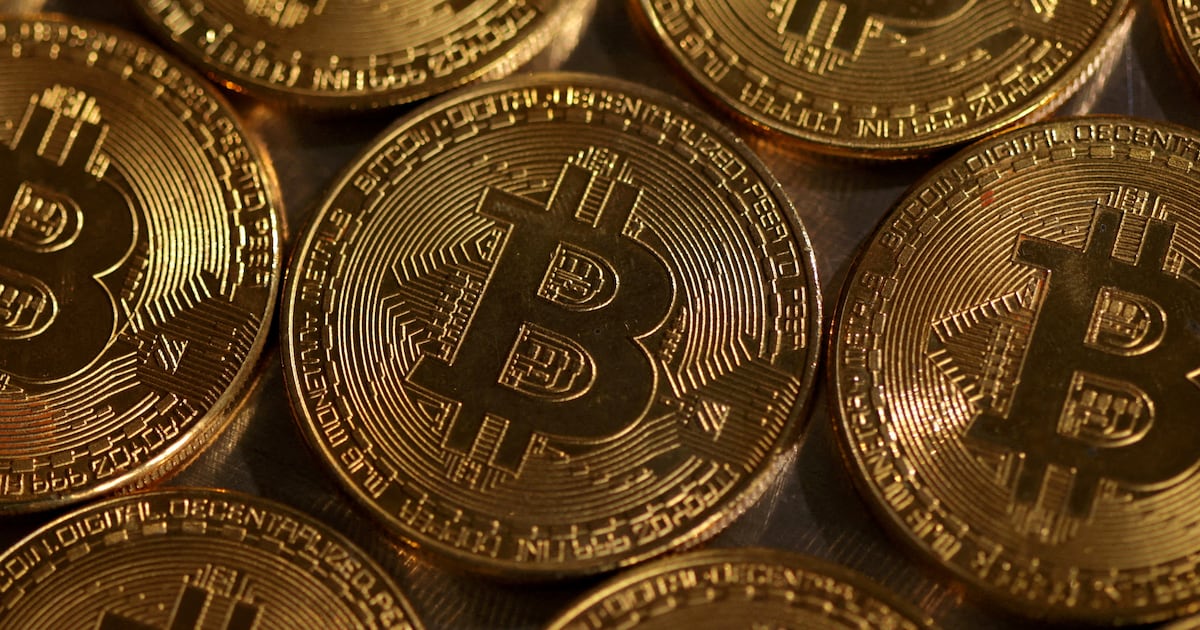Finance
What We Can Learn From Renewcell’s Financial Struggles

Renewcell 1 plant, November 2022.
Ordinarily, I subscribe to the belief that in sustainability discussions, opinions are redundant; we should lean on the science. But, yesterday a conflation of both was enlisted in an outcry for answers as to why Renewcell, fashionâs leading textile-to-textile recycling technology, had filed for bankruptcy. The science (and resulting technology) is solid; the route to profitability less so. And itâs the latter that really matters.
Yes, Renewcellâs advanced textile recycling process worksâI saw it with my own eyes at the inaugural launch in Sweden of their first (and now painfully numbered) Renewcell 1. But I wondered, from inception, how a facility in Sweden could help fashion brandsâRenewcellâs target customerâto solve the problem they seemed to care about most: recycling post-consumer waste. âOld jeans turned into new jeansâ was effectively the technologyâs strap line, and a fair one in terms of the companyâs ambition and technical potential. But the reality was that their advanced chemical recycling processâlike all others of its kindârequires a highly specific waste input (at least 95% cotton, at the time I visited Renewcell 1); a need best met by post-industrial (off-cut waste) on factory floors in manufacturing countries, not discarded clothes from consumers.
Renewcell 1, onsite waste awaiting processing.
My (curiosity-led and objective) question to Renewcell, Circ, Infinited Fiber and other similar technologies has always been: âsince you require homogenous waste of a specific composition and quality, and in large and consistent volumesâconditions currently best met by post-industrial waste streamsâwhy are your technologies in Europe and the U.S. where those needs cannot be met?â And, âwhy arenât you in the textile supply chain in Asia, alongside the factories who can provide your waste input, and purchase your recycled output?â Why, I still wonder, is the hopes of textile-to-textile recycling hinged on fashion brands in the Global North with other priorities, who procure products from the supply chain in the Global South? Why isnât the advancement of textile technologies being integrated into the supply-chain, since brands procure and sell finished goods, not fibres?
The answers have often been a combination of these: âthe investors are investing here [in the global north]â; âthe brands are here, so weâre hereâ, or âwe can achieve our lowest carbon footprint here due to renewable energyâ. Sweden offers abundant renewable energy, and that was certainly a factor for Renewcell. However, last week I revealed that Indiaâs rapid transition to renewable energy will soon answer that need, but I guess we may never know if the overall business case for Renewcell stacks up there.
And here we come to the central challenge I observe with advanced chemical recycling technologies setting up shop outside of manufacturing hubs and outside of readily available feedstock reserves: absent infrastructure and supply chain integration. Itâs a fact that the majority of the worldâs textiles and clothes are made in Asia. Around half of all textiles are made in China. Itâs also a fact that consumption in the Global Northâs mature fashion markets is stagnating (as examined astutely by researcher Lutz Walter). Conversely, markets in Asia are set for rapid growth in step with the expanding middle class, particular China and India. India is the most promising hope for textile circularity, but this success depends on the viability for each stakeholder along that supply chain. This requirement for a âbusiness caseâ has been somewhat ignored in the commentary following Renewcellâs bankruptcy filing, where the financial faltering was reportedly due to âa lack of orders from brandsâ. This reluctance to place orders points to the absence of a business case for Renewcellâs recycled âCirculoseâ fibers in the competitive and price-driven textile supply chain.
Sheets of Renewcell’s recycled textile ‘Circulose’ dissolving pulp, ready to ship from Sweden to … [+]
Renewcellâs business model placed the onus on brands to order its recycled âCirculoseâ dissolving pulp, which is much like pieces of cardboard that are shipped to textile spinners in Asia, rehydrated to release the fibers and then mixed with other fibers like cotton. The combined fibers are then spun into yarns, before being sent to textile mills to be made into fabrics. Relying on brands to prioritise this manner of materials sourcing is about as far removed from their business expertise and motivations as you can get; precious few brands buy any fibers at allâmost donât even know where their fabrics are made, let alone their origin of the fibers that went into them. Instead, brands typically rely on their nearest (tier 1) garment manufacturers to source textiles on their behalf, and to handle all the costings to make the economies of scale and unit pricing work, on the brandâs behalf.
Consider this: a brand facing todayâs tough economic outlook can either commit far in advance to sourcing a more expensive (but lower environmental impact) ingredient for future spinning into textiles in a volatile market, or, they can continue to ask their garment suppliers to source the ready-made cheaper equivalent in final textile form at the time they need it. The mistake here is to assume that if the science and tech stacks up, and the output is of high quality and low impact, it will succeed off the back of brandsâ commitment and storytelling to consumers. In fact, a business case for buying the fiber must exist, and one that isnât at odds with brandsâ upholding their fiduciary duty to maximise profits for shareholders; the absence of orders for Renewcellâs Circulose indicates that this business case does not currently exist. And this is not only a shame and a sadness for the brilliant Renewcell team members, but also its supply chainâthe factories and waste handlers in Bangladesh, Turkey and Kenya, who had agreements to sell and ship their waste to Renewcell, but now must search for another market for it, hurting their livelihoods.
Where there is an existing supply chainâend-to-endâthere is infrastructure and operational data to evaluate the business case for textile-to-textile recycling technologies, without relying on sustainability storytelling, and hoping that planetary good will will trump economics and profit maximisation. Currently, without environmental imperatives driving decision-making, the only other ones are financial. A new, low impact material cannot rely on realignment of corporate morality in order to compete with, or displace, incumbentsâthis harsh truth is critical.
Renewcell 1 commercial recycling facility, Sweden. November 2022.
Experts in countries like India and Bangladesh who are sourcing fibers, spinning yarns, knitting and weaving fabrics and making garments at fixed unit prices in fluctuating markets, on behalf of brands, are likely best placed to evaluate and integrate new recycling technologies. There is already a well established mechanical textile recycling supply chain in Indiaâs, for example, and the business case for building out advanced chemical recycling beyond this would be evaluated and demonstrated as a function of demand, volumes, technical feasibility, Capex and projected revenues within the textile economy that exists. This seems a logical next step for advanced recycling of textiles (and one I will evaluate in my next article).
Hopefully the next phases of textile-to-textile to recycling will be catalysed in the heart of the supply chain in Asia, where recent waste analysis by Fashion for Good and Canopy, and the establishment of Indiaâs Re-START Alliance, shows hope for expansion of a viable circular textiles economy.

Finance
Bajaj Finance vs Jio Financial: Which stock should you buy after Q4 results?

Bajaj Finance reported a decent double-digit rise in profit and interest income year-on-year. Jio Financial, on the other hand, reported a single-digit sequential rise in profit and interest income.
Jio Financial debuted on bourses in August last year, so its Q4 numbers were not comparable year-on-year.
Bajaj Finance reported its March quarter earnings on Thursday, April 25. Its share price plunged 7.73 per cent to ₹6,729.85 the following day.
Also Read: Why Bajaj Finance shares have tanked 8% despite double-digit YoY growth in PAT, NII in Q4?
Jio Financial reported its Q4 earnings on Friday, April 19. In the subsequent sessions on April 22 and 23, the stock rose 3.54 per cent and 1.27 per cent. However, it witnessed profit booking thereafter and closed in the red in the next three days. Still, for the week, Jio Financial share price climbed over 3 per cent.
Also Read: Jio Financial Services stock gains by over 73% in 6 months; what’s driving the rally?
Q4 result: Key numbers of Jio Financial and Bajaj Finance
Jio Financial Services reported a 6 per cent quarter-on-quarter (QoQ) jump in Q4 consolidated net profit to ₹310.6 crore. The revenue from operations increased 1 per cent QoQ to ₹418.1 crore from ₹413.6 crore in Q3FY24.
Its net interest income (NII) rose 4.5 per cent QoQ from ₹269 crore in Q3FY24 to ₹281 crore in Q4FY24.
Pre-provisioning operating profit for the quarter under review inched up to ₹317 crore against ₹315 crore QoQ.
Also Read: Jio Financial Services Q4 results: Net profit jumps 6% QoQ to ₹310.6 crore, net interest income at ₹280.7 crore
Bajaj Finance reported a 21 per cent year-on-year (YoY) rise in consolidated net profit to ₹3,825 crore in Q4FY24.
Its net interest income (NII) for Q4FY24 saw a 28 per cent YoY rise to ₹8,013 crore against ₹6,254 crore in Q4 of FY23.
However, the lender’s net interest margin (NIM) shrunk 21 basis points (bps) in Q4 over Q3.
Also Read: Bajaj Finance Q4 hit by rural loan losses, RBI restrictions
Which stock should you buy?
Jio Financial and Bajaj Finance have their own strengths and weaknesses. While Jio Financial has strong promoter backing, Bajaj Finance has an impressive performance history.
Jio Financial has aggressive growth plans. Recently, the company signed an agreement with BlackRock Inc and BlackRock Advisors Singapore Pte Ltd to form a 50/50 joint venture for setting up wealth management and broking businesses in India.
Experts find both stocks attractive for the long term and suggest one should pick between them according to their risk appetite.
Amit Goel, Co-Founder and Chief Global Strategist at Pace 360, prefers Jio Financial to Bajaj Finance, considering its strong growth potential.
“Choosing between Bajaj Finance and Jio Financial depends on an investor’s risk appetite and investment goal. Jio Financial, backed by Reliance Industries, is a rising star with ambitious plans to dominate the Indian financial landscape. Jio Financial presents a riskier yet potentially faster growth opportunity. We would recommend Jio Financial Services between these two,” said Goel.
Jignesh Shial, the director of research and the head of the BFSI sector at InCred Capital underscored that Jio Financial Services is at an initial stage, and it is early to predict about the stock.
“Jio Financial enjoys a strong brand name and promoter backing though there is intense competition in all segments,” Shial pointed out.
Bajaj Finance is Shial’s preferred pick given the resilient growth metrics, management track record of dealing with roadblocks and consistency in performance.
“We have an add rating on Bajaj Finance with a target price of ₹9,000 as we continue to bet on the NBFC’s aggressive customer acquisition and flawless diversity into new business,” said Shial.
Also Read: TCS vs HCL Tech vs Wipro vs Infosys: Which stock to buy after Q4 results 2024?
Some technical analysts point out that technical charts also favour Bajaj Finance at this juncture.
Riyank Arora, a technical analyst at Mehta Equities, pointed out that Jio Finance is trading in uncharted territory and near its all-time highs. A pullback towards the ₹300-310 zone should offer an excellent long-term buying opportunity for the stock.
However, the technical indicators and chart structure of Bajaj Finance show more stability, and any move towards the ₹6,000 to ₹6,200 zone should be an excellent long-term buy for the stock, Arora observed.
“At current levels, if we compare the technical chart structure of both stocks, then on any 8-10 per cent downside from the current levels, one can look to accumulate Bajaj Finance with a long-term vision for targets of ₹10,000 and above,” said Arora.
Read all market-related news here
Disclaimer: The views and recommendations above are those of individual analysts, experts and broking companies, not Mint. We advise investors to check with certified experts before making any investment decisions.
Unlock a world of Benefits! From insightful newsletters to real-time stock tracking, breaking news and a personalized newsfeed – it’s all here, just a click away! Login Now!
Download The Mint News App to get Daily Market Updates.
More
Less
Published: 28 Apr 2024, 10:00 AM IST
Finance
Ukraine's government will be able to finance all social expenditures this year – PM Shmyhal

All social expenditures in Ukraine will be fully financed this year thanks to financial support from partners.
Ukrainian Prime Minister Denys Shmyhal stated this on Ukrainian television, Ukrinform reports.
“We are sure that this year and, to be honest, next year as well we will definitely finance all social payments. Everything that the state has to fulfill will be fulfilled on time and in full,” Shmyhal said.
In particular, $7.5 billion of direct budget funding from the U.S. was provided to cover such expenses. Shmyhal also recalled that Ukraine would receive EUR 16 billion from the European Union this year. In addition, Ukraine has a support program with the International Monetary Fund.
“All of these resources are the anchor of funding for the Ukrainian budget,” Shmyhal said.
This year Ukraine has already received about $12 billion in external financing to cover the budget deficit.
Photo: Denys Smyhal / Telegram
Finance
Eliminating emotional behaviors leads to sounder financial decisions

The founder of behavioral finance, Nobel laureate Daniel Kahneman, recently passed away. His work has made a huge difference in helping me understand how emotions can interfere with more rational decisionmaking.
It hasn’t stopped me from, at times, making nonsensical financial decisions of my own, but it has helped me pause so I can minimize them. Here are some behaviors or biases we all probably share:
- We have said to ourselves, “When this investment gets back to even, I am going to sell it.” This is silly. The investment doesn’t care what we paid for it. We should objectively be looking at each investment on its own merits regardless of what we paid for it. But it is psychologically hard to take a loss and rewarding to grab a gain, so we have held on to bad investments and crossed our fingers that we will eventually save face. Importantly, this applies to individual stocks, not asset classes (small or large stocks, international stocks). In time, asset classes should mean revert, but stocks (and currencies) don’t. With asset classes, peel from your winners and give to your losers. With stocks, let your winners run and trim from them when they are too much of your portfolio, then invest in something that you think has potential.
- We have sometimes said no to something that we don’t want to do today, but said yes to it if presented as a future endeavor. When the event eventually shows up on our calendars, we regret it. This is discounting the future. Before saying yes to something, try to picture yourself preparing for it and decide if it is something you really want to do.
- We have gone out of our way to save $5 on a $50 item but not to save $5 on a $500 purchase. Why? The ignored numbers are even larger on big purchases. We often look at the percentage of the transaction rather than actual dollars we are saving.
- In his book “Thinking Fast and Slow,” Kahneman wrote, “When people believe a conclusion is true, they are also very likely to believe arguments that appear to support it, even when those arguments are unsound.” Good we’ve never done that, right? Right.
We are never going to eliminate our biases, so the key is to slow down and better manage our choices when we recognize we are making a high-stakes decision.
Spend your life wisely.
Ross Levin is the founder of Accredited Investors Wealth Management in Edina. He can be reached at ross@accredited.com.
-

 Kentucky1 week ago
Kentucky1 week agoKentucky first lady visits Fort Knox schools in honor of Month of the Military Child
-

 World1 week ago
World1 week agoEU leaders weigh Lebanon partnership in response to Middle East crisis
-

 Politics1 week ago
Politics1 week agoFormer Wisconsin Democratic Rep. Peter Barca launches congressional comeback bid
-

 World1 week ago
World1 week agoIsraeli attack on nuclear sites to prompt tit-for-tat, pursuing nukes: Iran
-

 News1 week ago
News1 week agoProsecutors say Trump violated gag order 7 times: Live updates
-

 World1 week ago
World1 week agoIranian media says three drones downed after explosions heard in Isfahan
-

 World1 week ago
World1 week agoShipping firms plead for UN help amid escalating Middle East conflict
-

 Movie Reviews1 week ago
Movie Reviews1 week agoFilm Review: Challengers – The Knockturnal


















